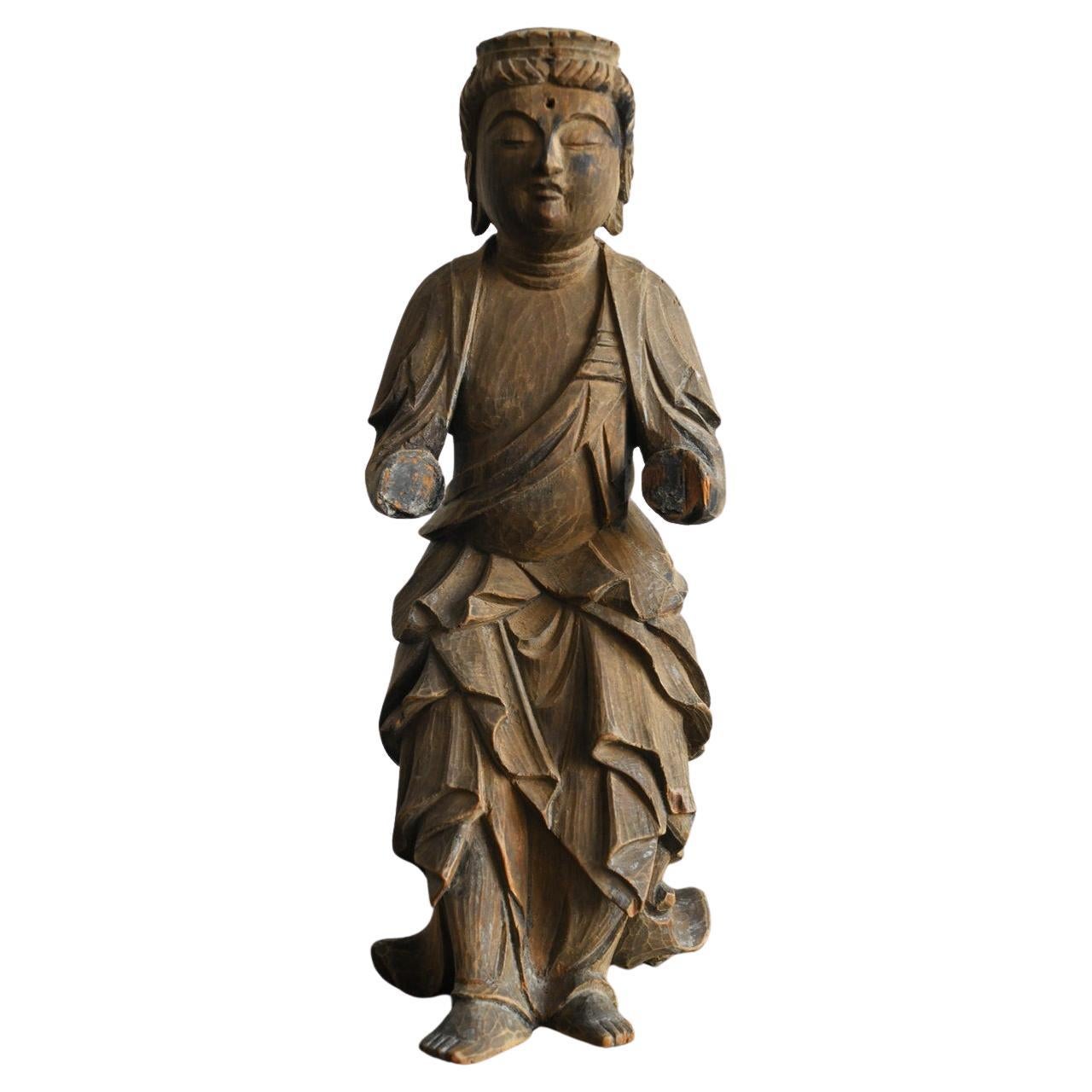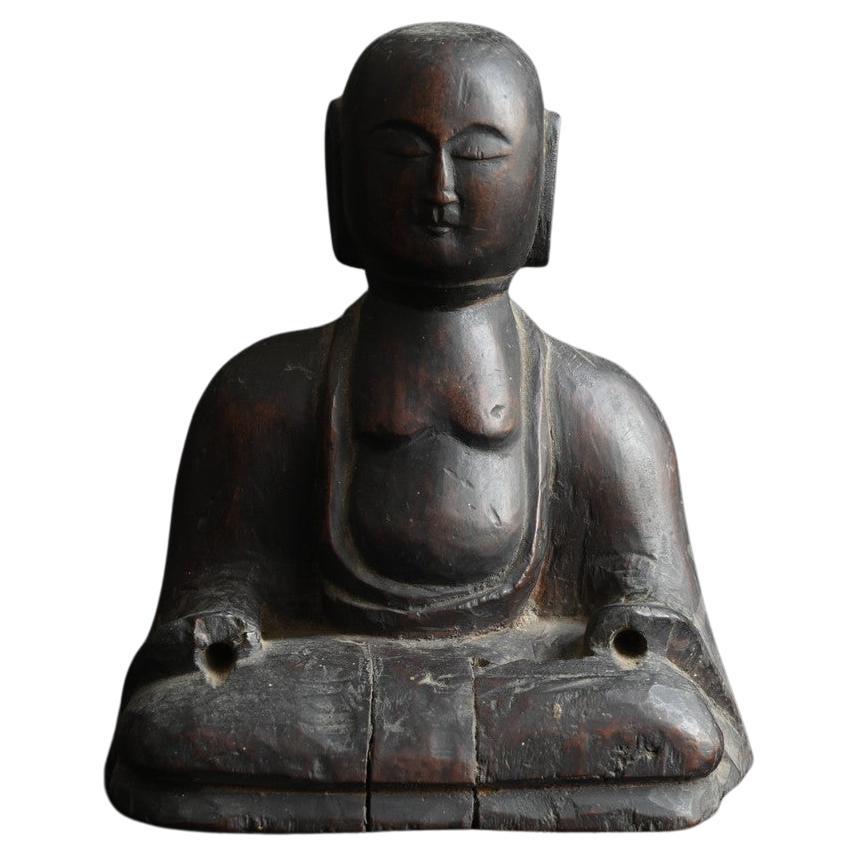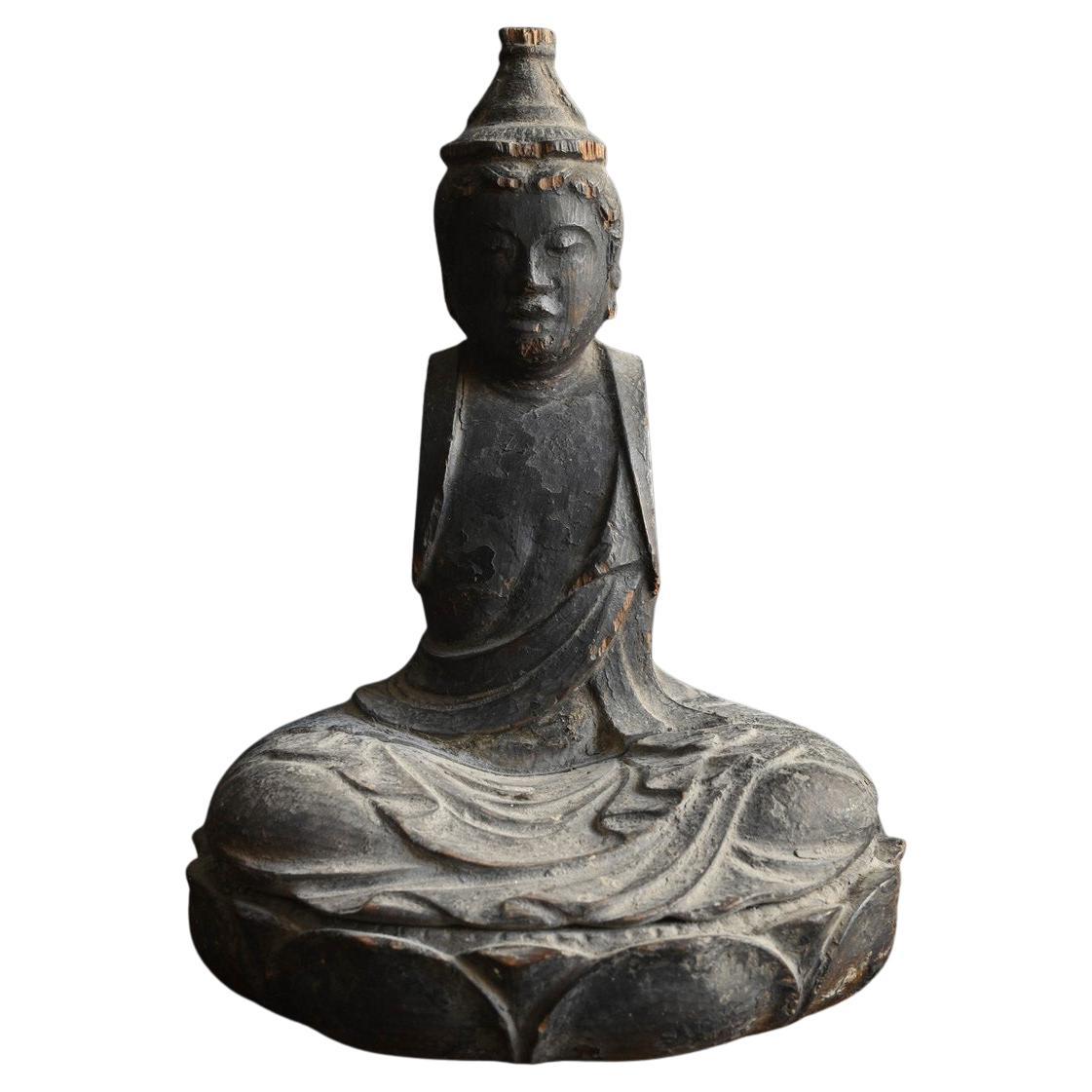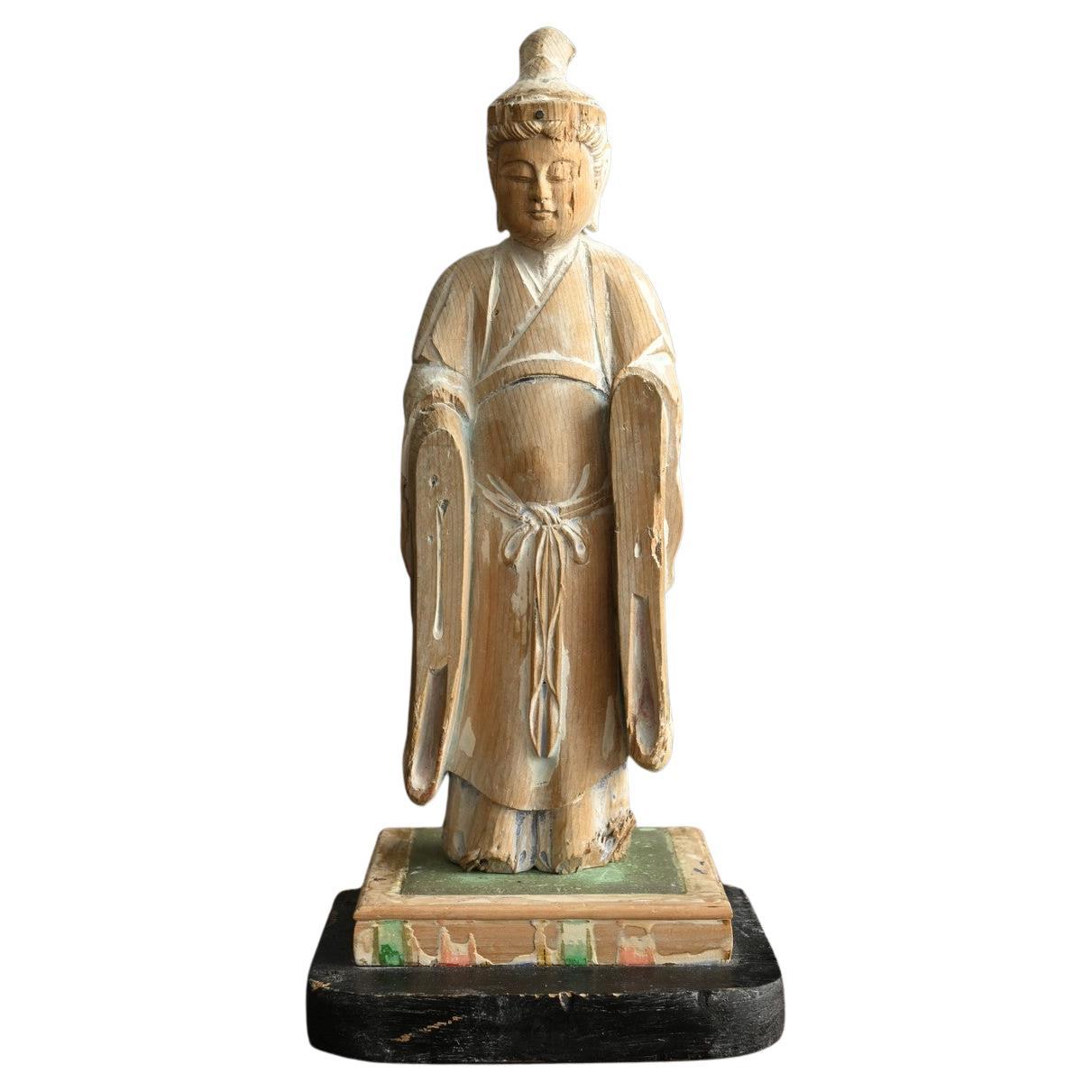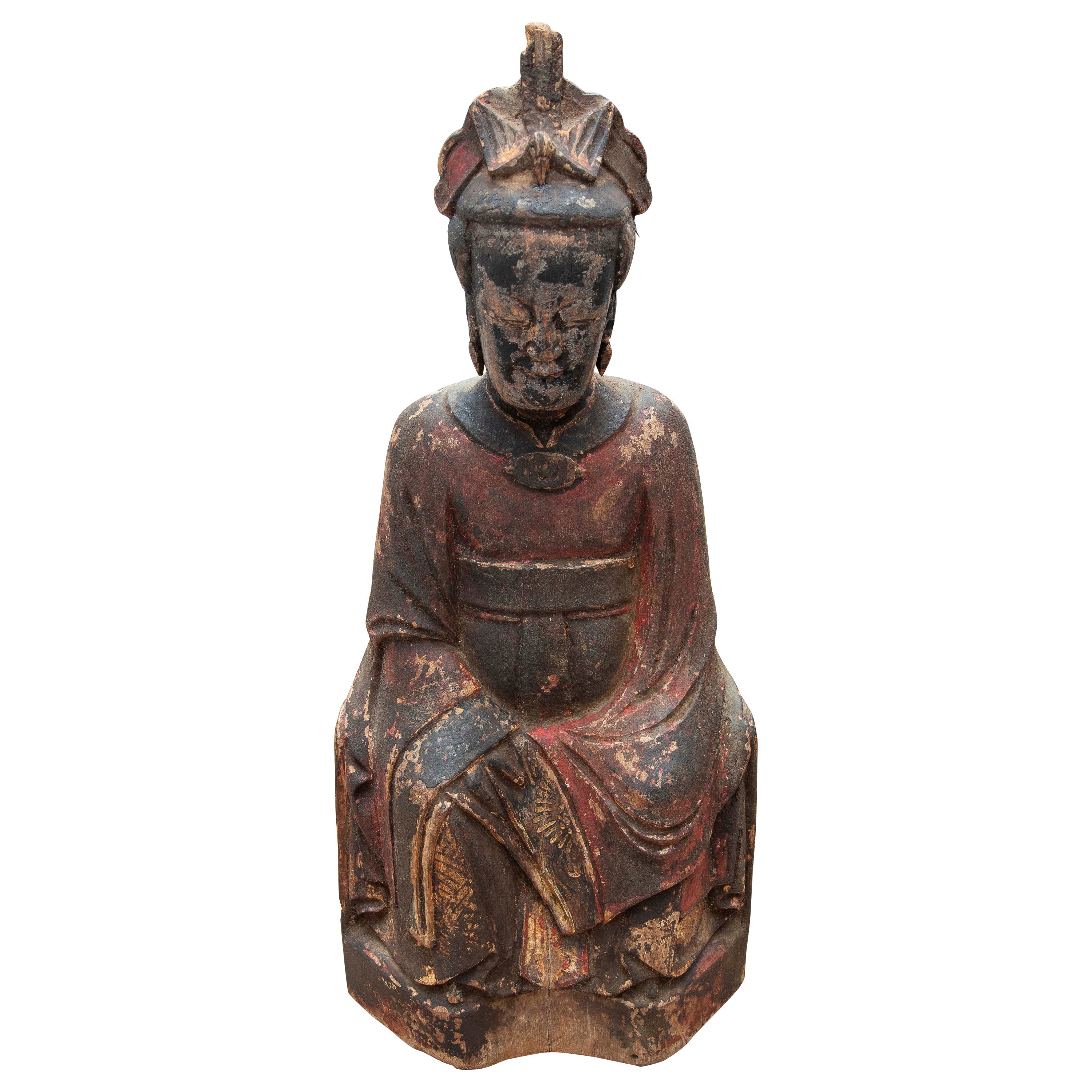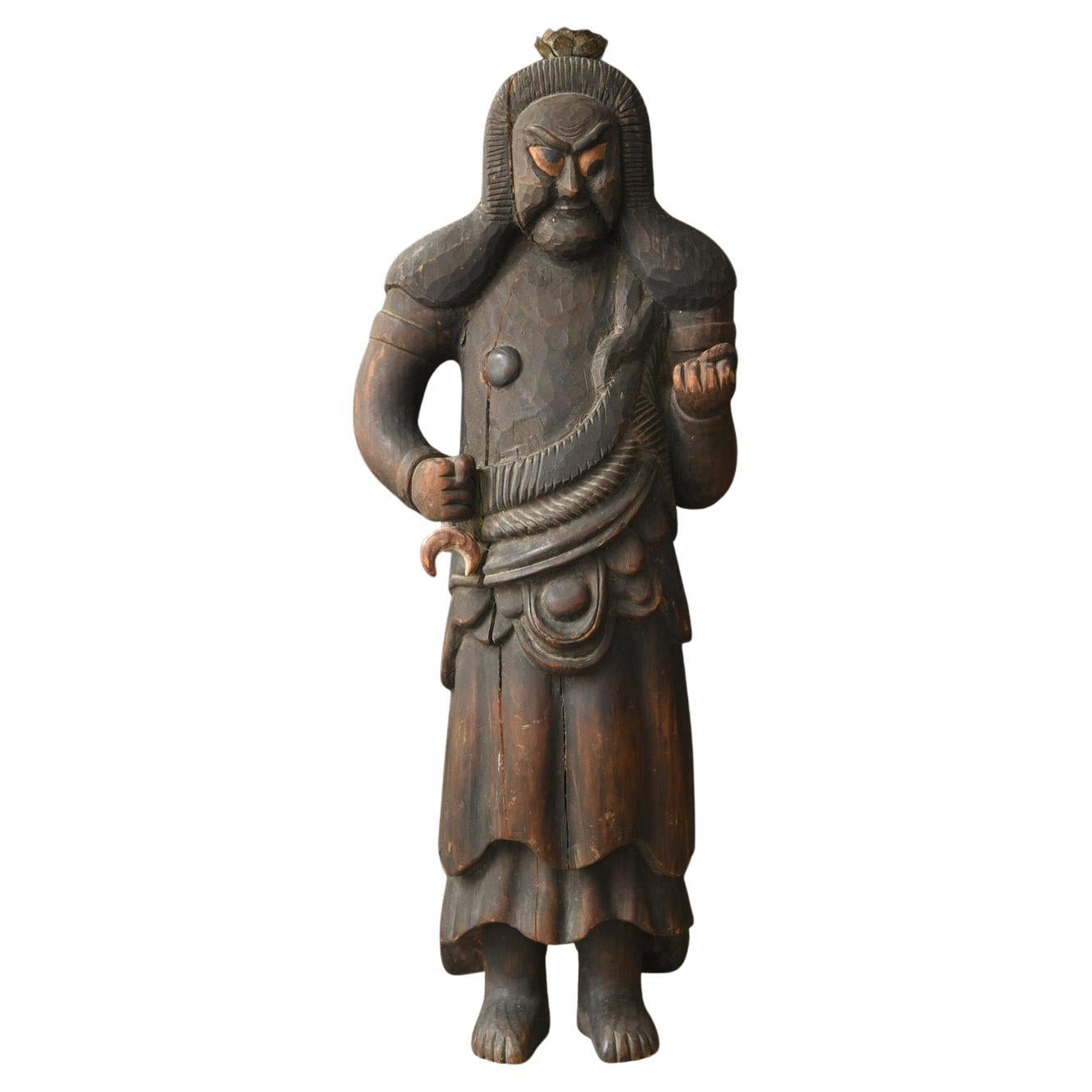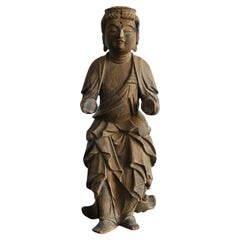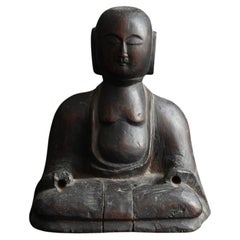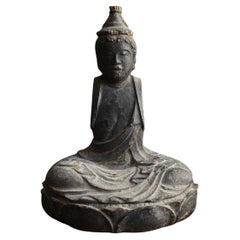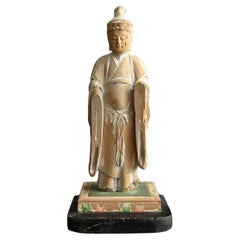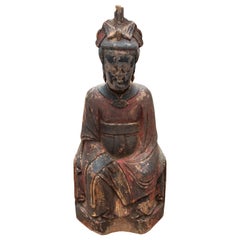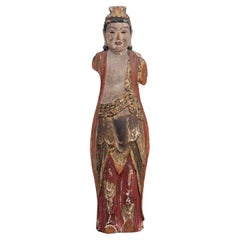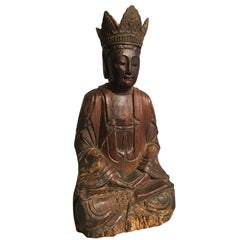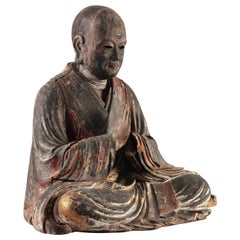Items Similar to Japanese bone head wooden small Buddha statue/Benzaiten/Muromachi to Edo period
Want more images or videos?
Request additional images or videos from the seller
1 of 21
Japanese bone head wooden small Buddha statue/Benzaiten/Muromachi to Edo period
On Hold
$1,200
On Hold
£911.02
On Hold
€1,042.01
On Hold
CA$1,676.57
On Hold
A$1,864.72
On Hold
CHF 973.70
On Hold
MX$22,691.61
On Hold
NOK 12,435.60
On Hold
SEK 11,662.39
On Hold
DKK 7,776.93
Shipping
Retrieving quote...The 1stDibs Promise:
Authenticity Guarantee,
Money-Back Guarantee,
24-Hour Cancellation
About the Item
This is a wooden statue of Benzaiten, one of the Seven Gods of Good Fortune, believed to have been made in Japan between the late Muromachi period and the mid-Edo period, from the 16th to the 18th century. Benzaiten originated from the Indian goddess Sarasvati and has long been worshipped in Japan as the goddess of music, eloquence, learning, and financial fortune. When depicted as one of the Seven Lucky Gods, she is often shown holding weapons or a jewel, and is beloved as a deity who bestows blessings and prosperity. There is a reference photo of a wooden Benzaiten from the Kamakura period designated as an Important Cultural Property of Japan, which I have attached for your reference.
The original statue is believed to have had eight arms, but currently only two arms remain on either side, with the other six having been lost. It is speculated that the right hand held a sword and the left hand held a jewel, and the original structure can be inferred from the joints on the back. Additionally, the carvings on the existing head, torso, and legs reveal beautiful forms that suggest the former splendor of the statue.
The statue was made from high-quality cypress wood with its straight grain and dense texture, and the beauty of the wood grain is apparent throughout. In particular, a piece of cypress wood is joined to the front part from the knees down, suggesting that the wood was glued together and the entire statue was carved in the initial production stage. This shows the woodcarving techniques and skillful construction of the Buddhist statue sculptors of the time.
Although it is believed that pigments were applied to the surface, the overall appearance is darkened by soot and other factors, which adds depth and charm to the statue. The dark atmosphere and the wood grain visible beneath the peeling surface embody the world of “wabi-sabi,” evoking a serene beauty born of the passage of time.
For display purposes, the included transparent acrylic stand allows for a slightly floating installation, further emphasizing the presence of the statue. A wooden storage box is also included, labeled with the characters for “Benzaiten” in ink. The lower left corner of the box is marked “Heian period,” but this is an error from a later period, and the actual production period is considered to be the late Muromachi to early Edo periods, as mentioned earlier.
Although small in size, this statue has a dignified presence and blends well with modern interiors. Simply placing it in a quiet space will bring a special atmosphere to the room. It can be used in a variety of spaces, such as a tokonoma, on top of a chest of drawers, or in a modern gallery space, as a piece that embodies the ancient Japanese beliefs and aesthetic sense.
This Buddha statue possesses a presence that transcends that of a mere antique art piece, as if it were imbued with prayer, time, and the soul of its creator. It quietly accompanies daily life, bringing a sense of calm to those who behold it.
This is a beautiful Benzaiten statue with a wabi-sabi atmosphere and highly skilled carving. I highly recommend it.
Size: Width 11.7 cm × Depth 10.1 cm × Height 21.4 cm
Weight: 232 g
Item Number: SC124
【We mainly sell old Japanese items, but also items from around the world.
We have seen tens of thousands of items so far.
Using that experience, we list appealing items here.
This is something we can do because of our long experience.
If you are looking for something special, we encourage you to purchase it on our site.】
- Dimensions:Height: 8.43 in (21.4 cm)Width: 4.61 in (11.7 cm)Depth: 3.98 in (10.1 cm)
- Style:Edo (Of the Period)
- Materials and Techniques:
- Place of Origin:
- Period:Early 17th Century
- Date of Manufacture:14-18century
- Condition:
- Seller Location:Sammu-shi, JP
- Reference Number:1stDibs: LU5487245980732
About the Seller
5.0
Gold Seller
Premium sellers maintaining a 4.3+ rating and 24-hour response times
Established in 2015
1stDibs seller since 2020
1,602 sales on 1stDibs
Typical response time: 5 hours
- ShippingRetrieving quote...Shipping from: senzoku, Japan
- Return Policy
Authenticity Guarantee
In the unlikely event there’s an issue with an item’s authenticity, contact us within 1 year for a full refund. DetailsMoney-Back Guarantee
If your item is not as described, is damaged in transit, or does not arrive, contact us within 7 days for a full refund. Details24-Hour Cancellation
You have a 24-hour grace period in which to reconsider your purchase, with no questions asked.Vetted Professional Sellers
Our world-class sellers must adhere to strict standards for service and quality, maintaining the integrity of our listings.Price-Match Guarantee
If you find that a seller listed the same item for a lower price elsewhere, we’ll match it.Trusted Global Delivery
Our best-in-class carrier network provides specialized shipping options worldwide, including custom delivery.More From This Seller
View AllSmall wooden Buddha statue from the Edo period in Japan/17th to 19th century
Located in Sammu-shi, Chiba
We are pleased to present a small wood carving of a flanking Bodhisattva made around the Edo period.
This work is thought to be one of the Kannon ...
Category
Antique 18th Century Japanese Edo Figurative Sculptures
Materials
Cypress
Japanese antique wood carved Buddha/1800s/late Edo period/folk Buddha
Located in Sammu-shi, Chiba
This is a wooden Jizo Bodhisattva statue made in the late Edo period in Japan.
It is thought that they were not carved by Buddhist sculptors living in central cities such as Kyoto or...
Category
Antique 19th Century Japanese Edo Figurative Sculptures
Materials
Cypress
Japanese antique wooden Buddha statue / Edo period / 1600 to 1800
Located in Sammu-shi, Chiba
This wooden statue is a relic from Japan's Edo period, and within it lies a deep history that transcends time. Originally, it was part of a more intricate statue, likely adorned with...
Category
Antique 17th Century Japanese Edo Sculptures and Carvings
Materials
Cypress
Wooden Buddha statues from the Edo period in Japan/1800-1868/Late Edo period
Located in Sammu-shi, Chiba
This wooden Buddhist statue was made in the late to late Edo period.
It is thought to be a statue of Kannon Bodhisattva.
It was originally placed in a shrine and was painted, but the...
Category
Antique 19th Century Japanese Edo Sculptures and Carvings
Materials
Cypress
Japanese antique wooden Buddha statue/Acala/Late Edo period/19th century
Located in Sammu-shi, Chiba
This is a statue of Fudō Myōō (Acala), believed to have been created in Japan during the late Edo period, specifically in the year 1804. On the back, there is an ink inscription that...
Category
Antique 19th Century Japanese Edo Sculptures and Carvings
Materials
Wood
Rare Japanese antique wooden god statue /12th century/small wabi-sabi figurines
Located in Sammu-shi, Chiba
I was able to obtain a very rare item.
This is a sculpture of the god ``Shinzo''.
"Shin" = God
"zo" = statue
Since ancient times in Japan, it has been believed that gods reside in all things in the universe, and there have been many shrines.
In the 6th century, Buddhism was introduced and gradually spread throughout Japan.
Around the 8th century, the idea that gods follow the teachings of Buddha spread.
Until the Edo period, God and Buddha became one and the idea of ``Shinto and Buddhism syncretism'' was established.
This statue was created during such a history.
Originally, the image of God was invisible and could not be understood as something tangible.
However, with the introduction of Buddhism to Japan, idol worship was also introduced, and the idea that the gods follow the teachings of Buddha was also propagated at the same time in order to spread the teachings of Buddhism.
Around that time, around the 9th century, the first statues of gods...
Category
Antique 15th Century and Earlier Japanese Other Figurative Sculptures
Materials
Cypress
You May Also Like
19th Hand Carved Oriental Seated Buddha in Wood with hollow in back
Located in Marbella, ES
19th Hand Carved Oriental Seated Buddha in Wood with hollow in back
Category
Mid-20th Century Chinese Antiquities
Materials
Wood
Wooden figure of Kannon 觀音, Japan, Edo period, 1st half 19th Century
Located in Greding, DE
Carved and colourfully painted wooden figure of the Japanese Buddhist deity Kannon with a height of 49 cm (height with base: 56.5 cm). Kannon 觀音 (‘perceiving the prayers of the world...
Category
Antique Early 19th Century Japanese Edo Figurative Sculptures
Materials
Wood
Chinese Carved Wood Bodhisattva Guanyin, Late Ming Dynasty, 17th Century
Located in Austin, TX
An attractive carved wood figure of the Bodhisattva Avalokiteshvara, known as Guanyin in China, late Ming Dynasty, early 17th century, China.
Guanyi...
Category
Antique Early 17th Century Chinese Ming Sculptures and Carvings
Materials
Gesso, Wood
Japanese Kamakura/Muromachi Period Cedarwood Buddhist Priest, 12th-15th Century
Located in Amsterdam, NL
Seated Buddhist priest
Japan, Kamakura period (1185-1333) or Muromachi period (1333-1573).
Different carved hollow blocks of cedar wood joined togeth...
Category
Antique 15th Century and Earlier Japanese Sculptures and Carvings
Materials
Cedar
Antique Japanese Carved Village Buddha Enku Style
Located in Atlanta, GA
A carved wood buddha with lacquered surface in the style of Erku (1632–1695), a monk from Edo period who was famous for hand-carving Buddha statues in a primitive style. From a single wood block of what appears to be cedar, the standing buddha was carved in an unpolished manner with exposed knife strokes that effectively depicted a subtly smiling face and the folding of the cascading robes. The rustic style is full of Mingei charm being a great example of Japanese Buddhism...
Category
Antique 18th Century Japanese Edo Sculptures and Carvings
Materials
Wood
Early Ming Dynasty Chinese Buddha Statue, circa 14th Century
Located in Dallas, TX
A very fine late Yuan to early Ming Chinese terracotta gilt and polychrome painted Buddha figure, he is dressed in thick robes, his hair arranged in ty...
Category
Antique 15th Century and Earlier Chinese Ming Figurative Sculptures
Materials
Terracotta
More Ways To Browse
Schneible Fine Arts Llc
Sang Min Lee
Legend Of Asia
Bone Foo Dogs
Samurai Puppet
Antique Cast Iron Gnome
Chinese Soapstone Bowl
Xian Warrior
Antique Balinese Door
Cerasuolo Coral Carving
Japanese Bronze Kannon
Sleeping Buddha
Design For Macha
Jadeite Statue
Sosaku Kokeshi
Vintage Barong
Cloisonne Enamel Figurine
Khmer Lion
